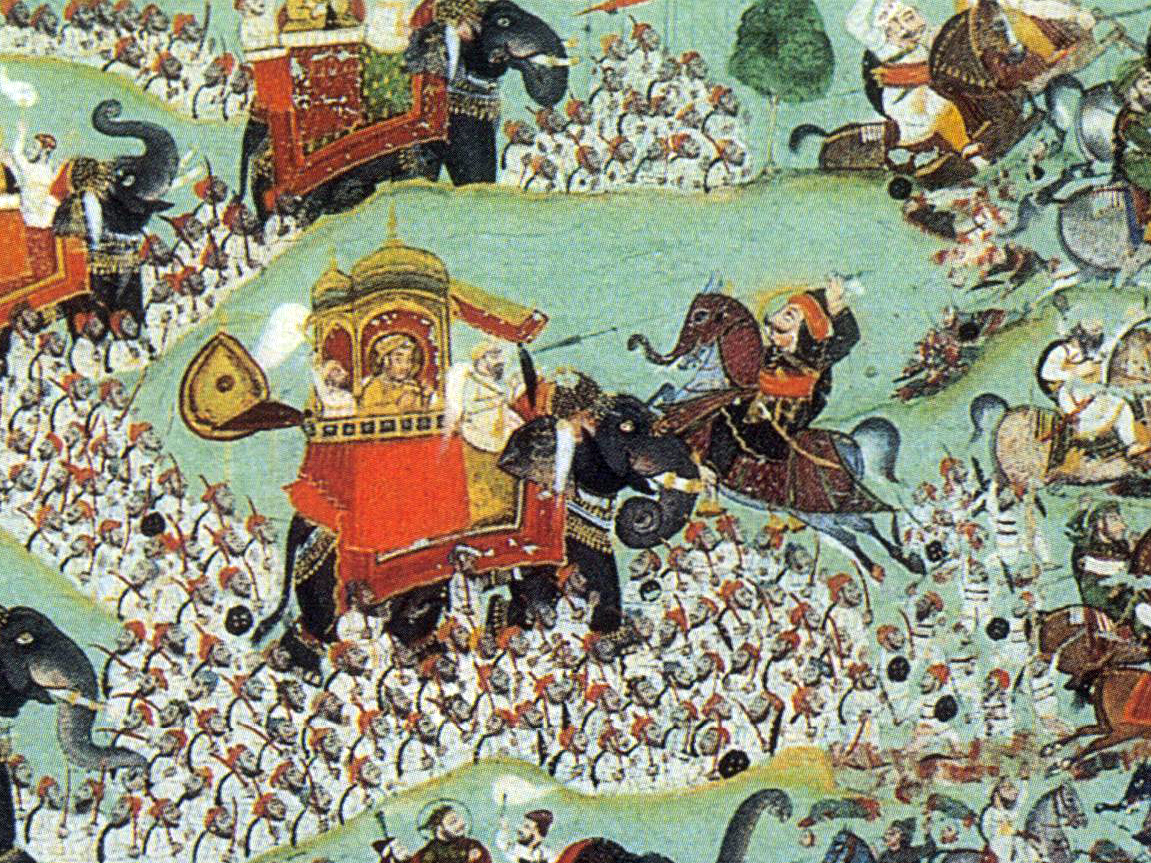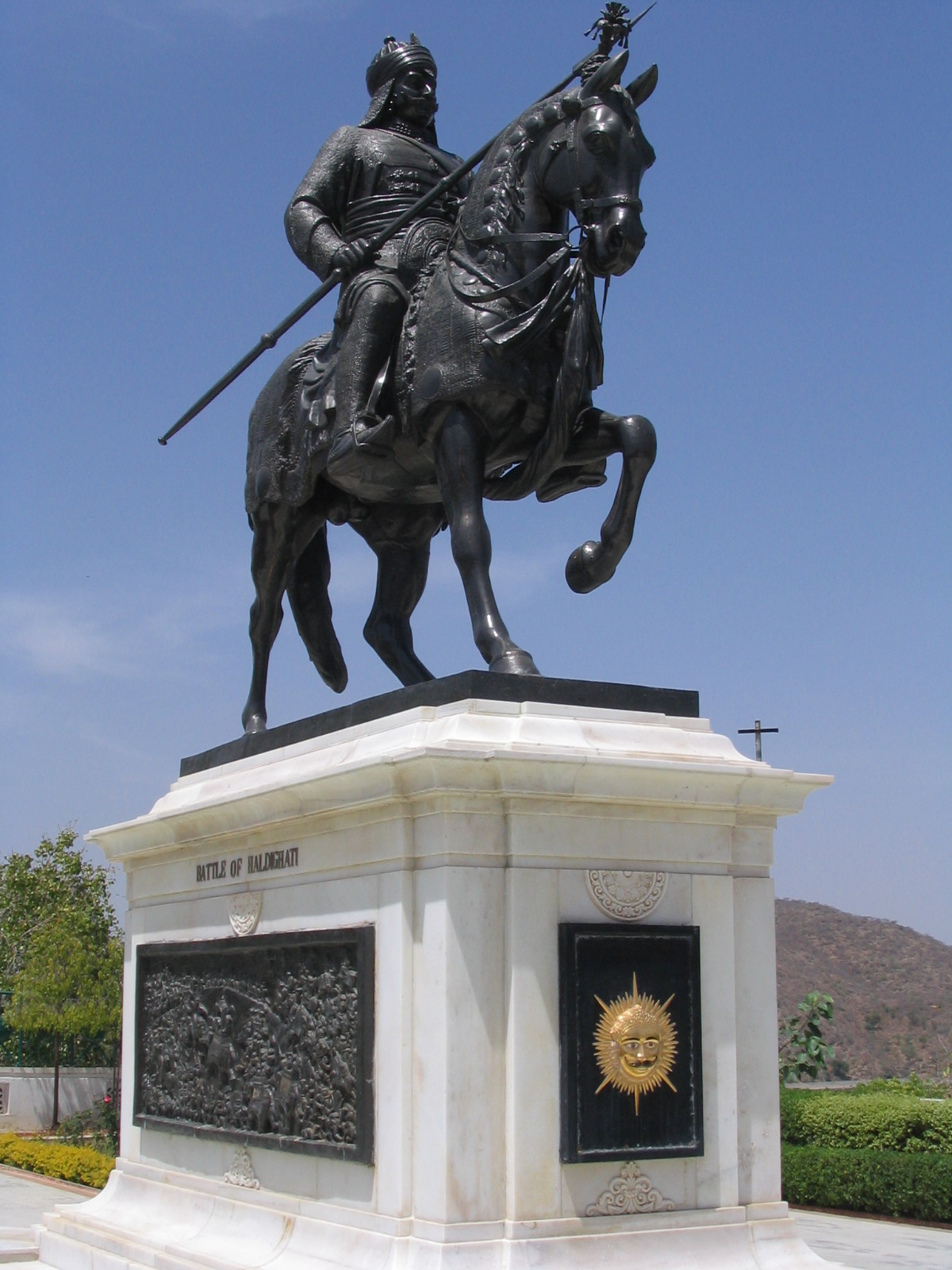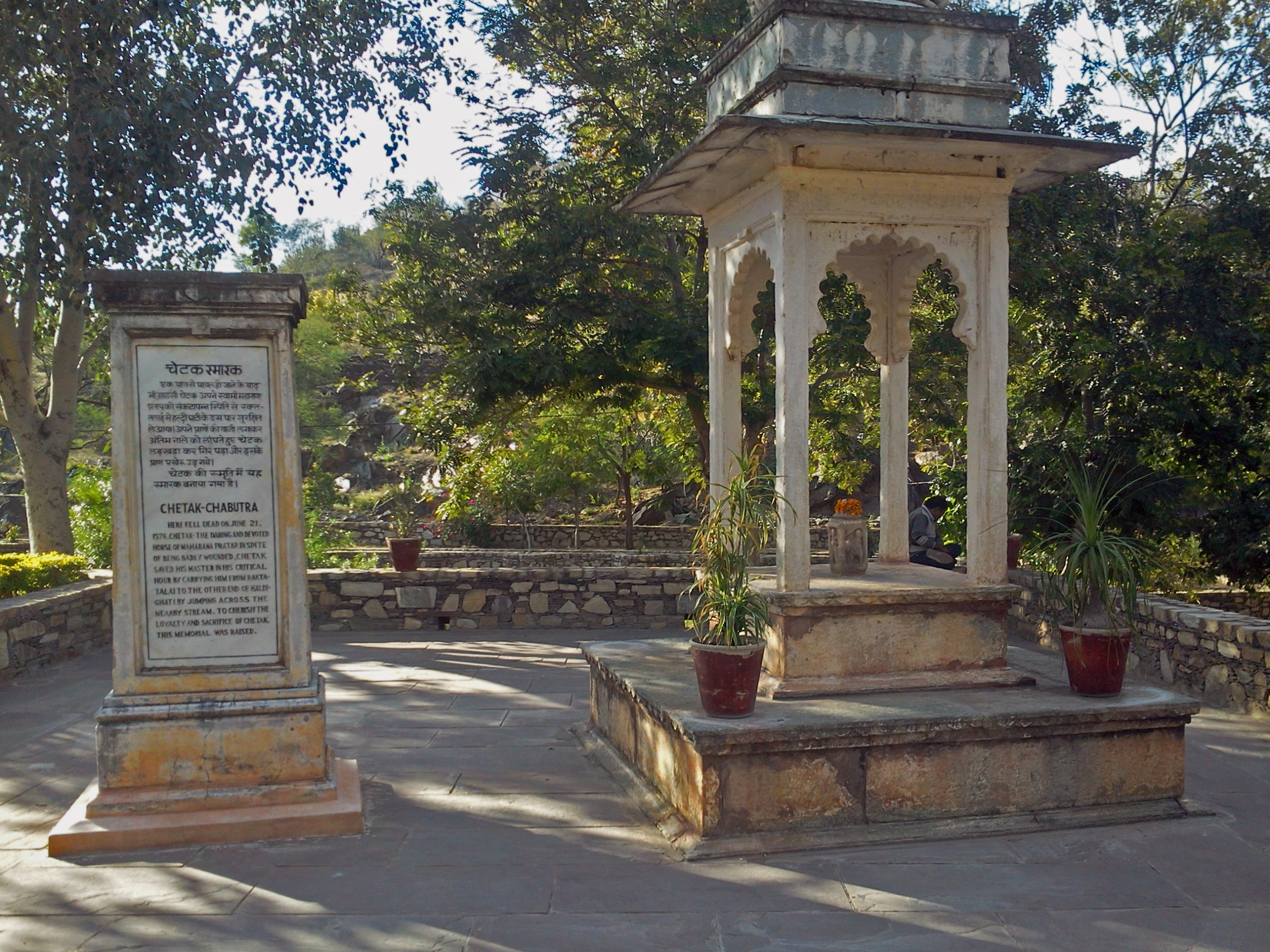|
Chetak (horse)
Chetak or Cetak is the name given in traditional literature to the horse ridden by Maharana Pratap at the Battle of Haldighati, fought on 18 June 1576 at Haldighati, in the Aravalli Mountains of Rajasthan, in western India. The story Historical sources do not name the horse ridden by Maharana Pratap at the Battle of Haldighati on 18 June 1576, nor do they attribute any unusual feat or achievement to it. According to tradition, the horse was called Chetak. Although wounded, he carried Pratap safely away from the battle, but then died of his wounds. The story is recounted in court poems of Mewar from the seventeenth century onwards. The horse is first named Cetak in an eighteenth-century ballad, ''Khummana-Raso''. The story was published in 1829 by Lieutenant-Colonel James Tod, a colonial officer who had been political officer to the Mewari court, in the first volume of his ''Annals and Antiquities of Rajast'han or the Central and Western Rajpoot States of India''. His ac ... [...More Info...] [...Related Items...] OR: [Wikipedia] [Google] [Baidu] |
Maharana Pratap
Pratap Singh I, popularly known as Maharana Pratap (c. 9 May 1540 – 19 January 1597), was a king of Mewar from the Sisodia dynasty. Pratap became a folk hero for his military resistance against the expansionism of the Mughal Empire under Akbar through guerrilla warfare which proved inspirational for later rebels against Mughals including Shivaji. Early life and accession Maharana Pratap was born to Udai Singh II of Mewar and Jaiwanta Bai. His younger brothers were Shakti Singh, Vikram Singh and Jagmal Singh. Pratap also had 2 stepsisters: Chand Kanwar and Man Kanwar. He was married to Ajabde Punwar of Bijolia and he had married 10 other women and was survived by 17 sons and 5 daughters including Amar Singh I. He belonged to the Royal Family of Mewar. After the death of Udai Singh in 1572, Rani Dheer Bai wanted her son Jagmal to succeed him but senior courtiers preferred Pratap, as the eldest son, to be their king. The desire of the nobles prevailed. Udai Singh died i ... [...More Info...] [...Related Items...] OR: [Wikipedia] [Google] [Baidu] |
Political Officer (British Empire)
The Indian Political Department (IPD), formerly known as the Foreign and Political Department of the Government of India, was a government department in British India. It originated in a resolution passed on 13 September 1783 by the board of directors of the East India Company; this decreed the creation of a department which could help “relieve the pressure” on the administration of Warren Hastings in conducting its "secret and political business". In 1843, Governor-General Ellenborough reformed the administration, organizing Secretariat of the Government into four departments – Foreign, Home, Finance and Military. The officer in charge of the foreign department was supposed to manage the "conduct of all correspondence belonging to the external and internal diplomatic relations of the government". Its political officers were responsible for the civil administration of frontier districts, and also served as British agents to rulers of Princely states. A distinction was mad ... [...More Info...] [...Related Items...] OR: [Wikipedia] [Google] [Baidu] |
Individual Warhorses
An individual is that which exists as a distinct entity. Individuality (or self-hood) is the state or quality of being an individual; particularly (in the case of humans) of being a person unique from other people and possessing one's own needs or goals, rights and responsibilities. The concept of an individual features in diverse fields, including biology, law, and philosophy. Etymology From the 15th century and earlier (and also today within the fields of statistics and metaphysics) ''individual'' meant " indivisible", typically describing any numerically singular thing, but sometimes meaning "a person". From the 17th century on, ''individual'' has indicated separateness, as in individualism. Law Although individuality and individualism are commonly considered to mature with age/time and experience/wealth, a sane adult human being is usually considered by the state as an "individual person" in law, even if the person denies individual culpability ("I followed instruct ... [...More Info...] [...Related Items...] OR: [Wikipedia] [Google] [Baidu] |
Rajsamand District
Rajsamand District is a district of the state of Rajasthan in western India. The city of Rajsamand is the district headquarters. The district was constituted on 10 April 1991 from Udaipur district by carving out 7 tehsils - Bhim, Deogarh, Amet, Kumbhalgarh, Rajsamand, Nathdwara, and Railmagra. Geography The district has an area of 4,768 km2. The Aravalli Range forms the northwestern boundary of the district, across which lies Pali District. Ajmer District lies to the north, Bhilwara District to the northeast and east, Chittorgarh District to the southeast, and Udaipur District to the south. The district lies in the watershed of the Banas River and its tributaries. Some other rivers are: Ari, Gomati, Chandra and Bhoga. Demographics According to the 2011 census Rajsamand district has a population of 1,156,597, roughly equal to the nation of Timor-Leste or the US state of Rhode Island. This gives it a ranking of 405th in India (out of a total of 640). The district h ... [...More Info...] [...Related Items...] OR: [Wikipedia] [Google] [Baidu] |
Chetak Smarak
Chetak Smarak, also called Chetak Samadhi, is a memorial to Maharana Pratap's famed steed Chetak, in the Indian state of Rajasthan. The horse died of battle wounds after helping the Rana effect a miraculous escape from the Battle of Haldighati. The memorial is said to have been built at the spot that Chetak died. It is situated in the Aravalli hills in the lake district of Rajsamand, at the village of Balicha. In 2003, the shrine was declared a Monument of National Importance in Rajasthan by the Archaeological Survey of India. It is an interesting little place with an old museum dedicated to the battle, and a new one coming up close by. It can be reached easily by road, about 4 km from the temple town of Nathdwara Nathdwara is a town near Rajsamand city in the Rajsamand district of the state of Rajasthan, India. It is located in the Aravalli hills, on the banks of the Banas River and is 48 kilometres north-east of Udaipur. Shrinathji, is a swarup o .... Re ... [...More Info...] [...Related Items...] OR: [Wikipedia] [Google] [Baidu] |
Jodhpur
Jodhpur (; ) is the second-largest city in the Indian state of Rajasthan and officially the second metropolitan city of the state. It was formerly the seat of the princely state of Jodhpur State. Jodhpur was historically the capital of the Kingdom of Marwar, which is now part of Rajasthan. Jodhpur is a popular tourist destination, featuring many palaces, forts, and temples, set in the stark landscape of the Thar Desert. It is popularly known as the "Blue City" among people of Rajasthan and all over India. It serves as the administrative headquarters of the Jodhpur district and Jodhpur division. The old city circles the Mehrangarh Fort and is bounded by a wall with several gates. The city has expanded greatly outside the wall, though over the past several decades. Jodhpur lies near the geographic centre of the Rajasthan state, which makes it a convenient base for travel in a region much frequented by tourists. The city featured in ''The New York Timess "52 Places to Go i ... [...More Info...] [...Related Items...] OR: [Wikipedia] [Google] [Baidu] |
Bhagwant Singh Of Mewar
Bhagwat Singh Mewar (20 June 1921 - 3 November 1984) was the titular ruler of the Indian princely state of Udaipur or Mewar from 1955 until the Indian government abolished all royal titles in 1971. Bhagwat Singh was born in 1927, three years after the accession of his father Bhupal Singh to the throne of Mewar and Udaipur as Maharana. Personal life In the 26th amendment to the Constitution of India promulgated in 1971, the Government of India abolished all official symbols of princely India, including titles, privileges, and remuneration ( privy purses).1. , "Through a constitutional amendment passed in 1971, Indira Gandhi stripped the princes of the titles, privy purses and regal privileges which her father's government had granted." (p 278). 2. Quote: "The princes of India – their number and variety reflecting to a large extent the chaos that had come to the country with the break up of the Mughal empire – had lost real power in the British time. Through g ... [...More Info...] [...Related Items...] OR: [Wikipedia] [Google] [Baidu] |
Equestrian Statue
An equestrian statue is a statue of a rider mounted on a horse, from the Latin ''eques'', meaning ' knight', deriving from ''equus'', meaning 'horse'. A statue of a riderless horse is strictly an equine statue. A full-sized equestrian statue is a difficult and expensive object for any culture to produce, and figures have typically been portraits of rulers or, in the Renaissance and more recently, military commanders. History Ancient Greece Equestrian statuary in the West dates back at least as far as Archaic Greece. Found on the Athenian acropolis, the sixth century BC statue known as the Rampin Rider depicts a ''kouros'' mounted on horseback. Ancient Middle and Far East A number of ancient Egyptian, Assyrian and Persian reliefs show mounted figures, usually rulers, though no free standing statues are known. The Chinese Terracotta Army has no mounted riders, though cavalrymen stand beside their mounts, but smaller Tang Dynasty pottery tomb Qua figures often include them, ... [...More Info...] [...Related Items...] OR: [Wikipedia] [Google] [Baidu] |
Chetak Samadhi
Chetak Smarak, also called Chetak Samadhi, is a memorial to Maharana Pratap's famed steed Chetak, in the Indian state of Rajasthan. The horse died of battle wounds after helping the Rana effect a miraculous escape from the Battle of Haldighati. The memorial is said to have been built at the spot that Chetak died. It is situated in the Aravalli hills in the lake district of Rajsamand, at the village of Balicha. In 2003, the shrine was declared a Monument of National Importance in Rajasthan by the Archaeological Survey of India. It is an interesting little place with an old museum dedicated to the battle, and a new one coming up close by. It can be reached easily by road, about 4 km from the temple town of Nathdwara Nathdwara is a town near Rajsamand city in the Rajsamand district of the state of Rajasthan, India. It is located in the Aravalli hills, on the banks of the Banas River and is 48 kilometres north-east of Udaipur. Shrinathji, is a swarup o .... Refer ... [...More Info...] [...Related Items...] OR: [Wikipedia] [Google] [Baidu] |
Nationalist
Nationalism is an idea and movement that holds that the nation should be congruent with the state. As a movement, nationalism tends to promote the interests of a particular nation (as in a group of people), Smith, Anthony. ''Nationalism: Theory, Ideology, History''. Polity, 2010. pp. 9, 25–30; especially with the aim of gaining and maintaining the nation's sovereignty ( self-governance) over its homeland to create a nation-state. Nationalism holds that each nation should govern itself, free from outside interference ( self-determination), that a nation is a natural and ideal basis for a polity, and that the nation is the only rightful source of political power. It further aims to build and maintain a single national identity, based on a combination of shared social characteristics such as culture, ethnicity, geographic location, language, politics (or the government), religion, traditions and belief in a shared singular history, and to promote national unity or so ... [...More Info...] [...Related Items...] OR: [Wikipedia] [Google] [Baidu] |
Bengal
Bengal ( ; bn, বাংলা/বঙ্গ, translit=Bānglā/Bôngô, ) is a geopolitical, cultural and historical region in South Asia, specifically in the eastern part of the Indian subcontinent at the apex of the Bay of Bengal, predominantly covering present-day Bangladesh and the Indian state of West Bengal. Geographically, it consists of the Ganges-Brahmaputra delta system, the largest river delta in the world and a section of the Himalayas up to Nepal and Bhutan. Dense woodlands, including hilly rainforests, cover Bengal's northern and eastern areas, while an elevated forested plateau covers its central area; the highest point is at Sandakphu. In the littoral southwest are the Sundarbans, the world's largest mangrove forest. The region has a monsoon climate, which the Bengali calendar divides into six seasons. Bengal, then known as Gangaridai, was a leading power in ancient South Asia, with extensive trade networks forming connections to as far away as Roman Egypt. ... [...More Info...] [...Related Items...] OR: [Wikipedia] [Google] [Baidu] |
British Raj
The British Raj (; from Hindi ''rāj'': kingdom, realm, state, or empire) was the rule of the British Crown on the Indian subcontinent; * * it is also called Crown rule in India, * * * * or Direct rule in India, * Quote: "Mill, who was himself employed by the British East India company from the age of seventeen until the British government assumed direct rule over India in 1858." * * and lasted from 1858 to 1947. * * The region under British control was commonly called India in contemporaneous usage and included areas directly administered by the United Kingdom, which were collectively called British India, and areas ruled by indigenous rulers, but under British paramountcy, called the princely states. The region was sometimes called the Indian Empire, though not officially. As ''India'', it was a founding member of the League of Nations, a participating nation in the Summer Olympics in 1900, 1920, 1928, 1932, and 1936, and a founding member of the United Nations in ... [...More Info...] [...Related Items...] OR: [Wikipedia] [Google] [Baidu] |







